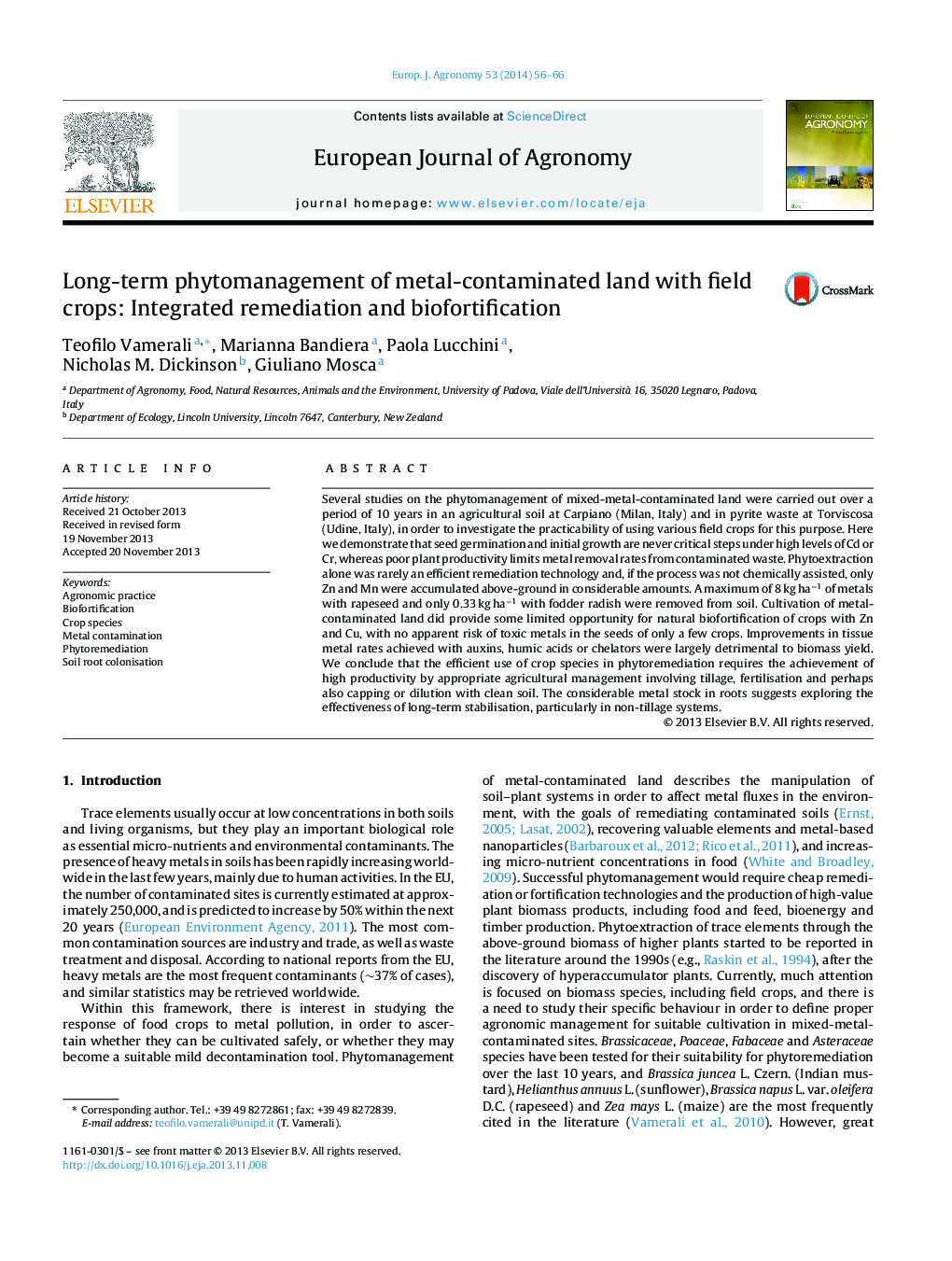| کد مقاله | کد نشریه | سال انتشار | مقاله انگلیسی | نسخه تمام متن |
|---|---|---|---|---|
| 4508993 | 1624472 | 2014 | 11 صفحه PDF | دانلود رایگان |
• Metal phytoextraction using field crops requires an integrated technology.
• On polluted land, Zn and occasionally Cu biofortification is possible.
• Productivity but not seed germination is critically affected by contamination.
• Metal uptake can be improved by both agronomic practices and species choice.
• Enhanced root growth can improve stabilisation of metals in biomass.
Several studies on the phytomanagement of mixed-metal-contaminated land were carried out over a period of 10 years in an agricultural soil at Carpiano (Milan, Italy) and in pyrite waste at Torviscosa (Udine, Italy), in order to investigate the practicability of using various field crops for this purpose. Here we demonstrate that seed germination and initial growth are never critical steps under high levels of Cd or Cr, whereas poor plant productivity limits metal removal rates from contaminated waste. Phytoextraction alone was rarely an efficient remediation technology and, if the process was not chemically assisted, only Zn and Mn were accumulated above-ground in considerable amounts. A maximum of 8 kg ha−1 of metals with rapeseed and only 0.33 kg ha−1 with fodder radish were removed from soil. Cultivation of metal-contaminated land did provide some limited opportunity for natural biofortification of crops with Zn and Cu, with no apparent risk of toxic metals in the seeds of only a few crops. Improvements in tissue metal rates achieved with auxins, humic acids or chelators were largely detrimental to biomass yield. We conclude that the efficient use of crop species in phytoremediation requires the achievement of high productivity by appropriate agricultural management involving tillage, fertilisation and perhaps also capping or dilution with clean soil. The considerable metal stock in roots suggests exploring the effectiveness of long-term stabilisation, particularly in non-tillage systems.
Journal: European Journal of Agronomy - Volume 53, February 2014, Pages 56–66
